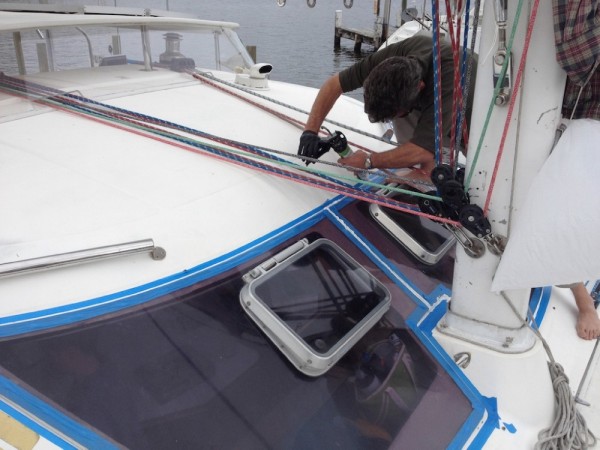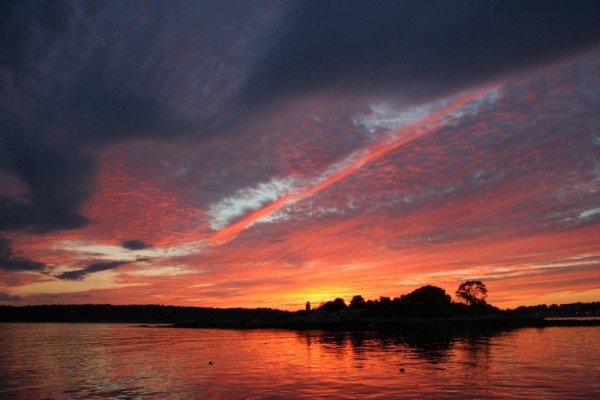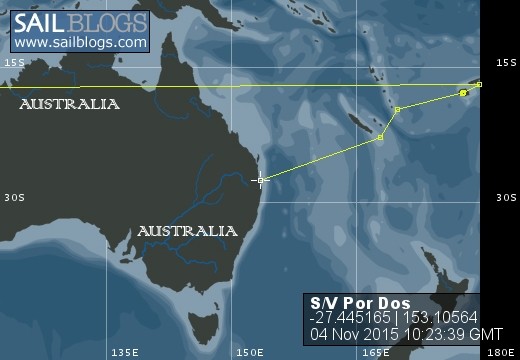
Por Dos
Family cruising in a Catamaran
16 December 2017 | Brisbane
04 November 2015 | Brisbane, Australia
30 October 2015 | Isle de Pines, Noumea, New Caledonia
08 October 2015 | Tanna, Vanuatu
01 October 2015 | Viti Levu, Mololo, Fiji
21 September 2015 | Namena, Musket Cove Malolo, Vuda Point Viti Levu, Fiji
12 September 2015 | Vanua Levu and Taveuni, Fiji
02 September 2015 | Tonga
13 August 2015 | Suwarrow, Cook Islands
25 July 2015 | Tahaa, Bora Bora and Maupiti French Polynesia
17 June 2015 | Tahiti & Moorea, French Polynesia
16 June 2015 | Fakarava, Tuamotu Islands, French Polynesia
06 June 2015 | Tahanea, Tuamotu Islands, French Polynesia
01 June 2015 | Raiatea, Tuamotu Islands, French Polynesia
28 May 2015 | Taiohae Bay, Nuku Hiva, Marquesas Islands, French Polynesia
12 May 2015 | Taiohae Bay, Nuku Hiva, Marquesas Islands, French Polynesia
26 April 2015 | Academy Bay, Puerto Ayora, Santa Cruz, Islas Galapagos, Ecuador
13 April 2015 | Panama to Galapagos
07 April 2015 | Balboa, Panama
31 March 2015 | Colon, Panama
Gruta Das Torres
01 June 2013 | Pico, Azores
Alec Morwood-Portoles
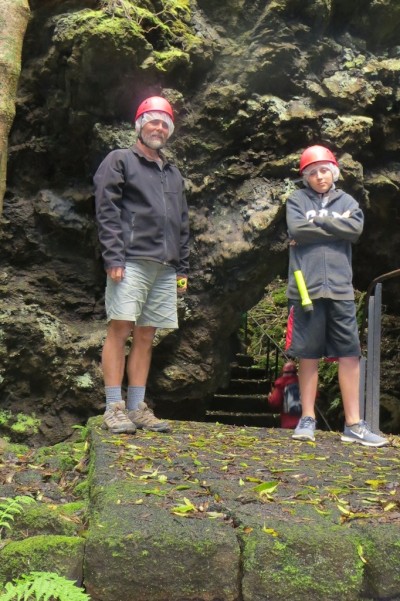
Gruta Das Torres is the name of a lava tube on the island of Pico. We went there with our guests, Matt and Marg. We left the town of Horta on Faial Island at one pm and took the ferry across to Pico Island. From the ferry landing in the town of Madalena, we took a taxi up to the interpretive center for Gruta Das Torres and arrived there a little before 2 pm, which is when it opens. We waited in front of the center for a while until it finally opened around 2:10. We then entered the tour, which was made up of a Swedish group of 13 people and us. We then watched an interesting video about how the lava tube was formed and about what lived in it (only fungi, bacteria, molds, and a type of insect, which is endemic to Pico Island). We were then given flashlights and helmets, and guided into the lava tube through a "skylight" to the surface where part of the ceiling of the lava tube had collapsed.
We descended from next to the interpretive center down a flight of stone steps into the lava tube were for the first bit we went along a concrete walkway with our guide telling us about how scientists didn't know what made the bacteria a gold color. He also told us why the lava at the end of the walkway was called biscuit lava. It was because when the Portuguese settlers arrived it felt like their biscuits, though it didn't look like biscuits to me, more like rough rock covered with bluntish spikes. We went along on the biscuit lava next to chunks of lava that had obviously fallen from the ceiling, some of which had a sort of glaze on them which was formed by pahoa lava. We got to a point where the tunnel split with a boulder in front of the split that looked like it was glued to the floor, our guide explained that it was called a lava ball and that it was a boulder that had been carried along by the lava flow and got stuck, being glued to the floor by the solidifying lava. We went down the tunnel to the right until we came to the end of the biscuit lava where it changed into ropy lava where the lava looks like ropes lying across the tunnel, just after that there were some lava stalactites where the lava had melted the rock above so that it dripped down into the lava flow until it solidified leaving stalactites that hung from the ceiling. After the ropy lava we came to a section of pahoa lava where it had gone really fast making the tunnel twist and turn. We eventually got to the point were the tunnels joined together again and we went back along the other one which was all biscuit lava with even bigger chunks of the ceiling on the floor. At one point the guide had us turn off our flashlights so that we could see how dark it was. It was so dark that I couldn't see my hand in front of my face even if I touched my face! When we got out of the lava tube we walked back to the ferry which was about a one hour walk along a country road through cow pastures and vineyards. (You could tell that the cows had been on the road by the presents they had left!)
Alec
We descended from next to the interpretive center down a flight of stone steps into the lava tube were for the first bit we went along a concrete walkway with our guide telling us about how scientists didn't know what made the bacteria a gold color. He also told us why the lava at the end of the walkway was called biscuit lava. It was because when the Portuguese settlers arrived it felt like their biscuits, though it didn't look like biscuits to me, more like rough rock covered with bluntish spikes. We went along on the biscuit lava next to chunks of lava that had obviously fallen from the ceiling, some of which had a sort of glaze on them which was formed by pahoa lava. We got to a point where the tunnel split with a boulder in front of the split that looked like it was glued to the floor, our guide explained that it was called a lava ball and that it was a boulder that had been carried along by the lava flow and got stuck, being glued to the floor by the solidifying lava. We went down the tunnel to the right until we came to the end of the biscuit lava where it changed into ropy lava where the lava looks like ropes lying across the tunnel, just after that there were some lava stalactites where the lava had melted the rock above so that it dripped down into the lava flow until it solidified leaving stalactites that hung from the ceiling. After the ropy lava we came to a section of pahoa lava where it had gone really fast making the tunnel twist and turn. We eventually got to the point were the tunnels joined together again and we went back along the other one which was all biscuit lava with even bigger chunks of the ceiling on the floor. At one point the guide had us turn off our flashlights so that we could see how dark it was. It was so dark that I couldn't see my hand in front of my face even if I touched my face! When we got out of the lava tube we walked back to the ferry which was about a one hour walk along a country road through cow pastures and vineyards. (You could tell that the cows had been on the road by the presents they had left!)
Alec
Comments
| Vessel Name: | S/V Por Dos |
| Vessel Make/Model: | Catana 48 |
| Hailing Port: | Salem, MA |
| Crew: | Mark, Marta, Alec & Roan |
Us
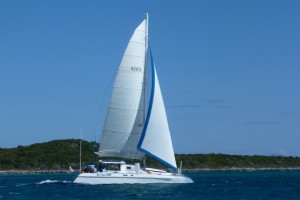
Who: Mark, Marta, Alec & Roan
Port: Salem, MA
